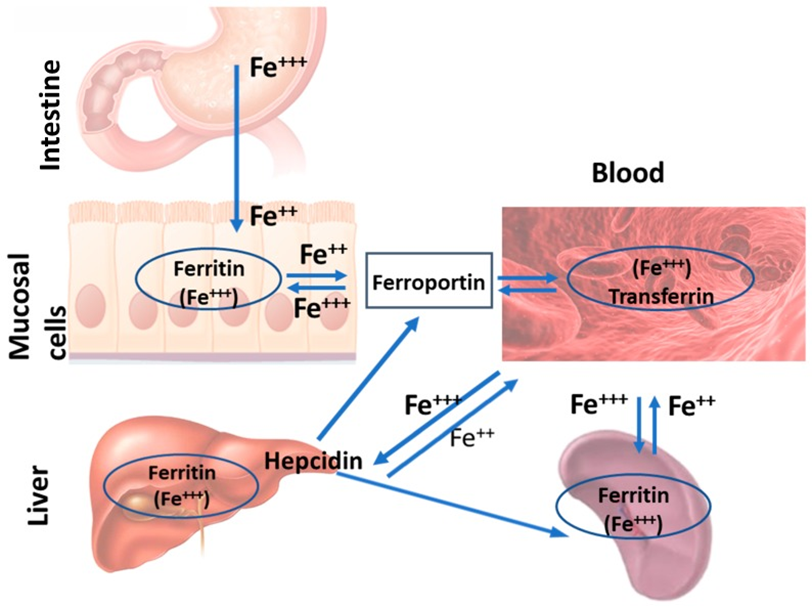Welcome to ODX's "Deep Dive Into Iron Metabolism" Series. In this series of posts, the ODX Research Team dives into all things iron with an exploration of common disorders of iron metabolism, iron deficiency anemia, and iron overload, and an exploration of the biomarkers that form the Iron Panel.
Source: ACS Omega 2022, 7, 24, 20441–20456 Publication Date:June 10, 2022 https://doi.org/10.1021/acsomega.2c01833 Copyright © 2022 The Authors. Published by American Chemical Society. This publication is licensed under CC-BY 4.0.
Iron is an essential trace mineral required for vital physiological processes, including hemoglobin production, oxygen transport, energy generation, DNA and RNA synthesis, myelin formation, and enzyme cofactor activity (Kotze 2009). Iron is also an essential cofactor for synthesizing serotonin, dopamine, and norepinephrine neurotransmitters (Berthou 2022).
Free iron can cause oxidative stress, so it must be bound to proteins like heme group proteins, ferritin, or transferrin to prevent tissue and organ damage.
Dysregulation of iron metabolism can lead to iron deficiency anemia (IDA), iron overload disorders such as hemochromatosis, and other health complications.
Iron deficiency anemia (IDA) is the most common nutrient deficiency worldwide, often resulting from inadequate intake, malabsorption, or blood loss. It is characterized by fatigue and pallor due to small, hemoglobin-deficient red blood cells. Conversely, iron overload can damage vital organs and is caused by excessive iron intake, overdose, blood transfusions, or certain anemias.
Evaluating iron blood biomarkers is crucial for diagnosing iron-related disorders and monitoring treatment. Managing altered iron status involves increasing iron intake for IDA and decreasing iron load for hemochromatosis and iron overload. It is also essential to consider inflammation when evaluating iron status, as it can transiently affect iron biomarkers and confound the assessment.
Clinicians must recognize and address alterations in iron status as both deficiency and overload can be life-threatening.

The main tissues involved in the regulation of systemic iron metabolism. Duodenal enterocytes are responsible for dietary iron absorption. Upon absorption, iron circulates around the body bound to the protein transferrin and is taken up by different tissues for utilization. The reticuloendothelial system, which includes the splenic macrophages, recycles iron from senescent erythrocytes. Among many other functions, the liver produces the hormone hepcidin. Hepcidin controls the release of iron from enterocytes and macrophages into the circulation and is regarded as the master regulator of systemic iron metabolism.
Source: Yiannikourides, Andronicos, and Gladys O Latunde-Dada. “A Short Review of Iron Metabolism and Pathophysiology of Iron Disorders.” Medicines (Basel, Switzerland) vol. 6,3 85. 5 Aug. 2019, doi:10.3390/medicines6030085 This article is an open-access article distributed under the terms and conditions of the Creative Commons Attribution (CC BY) license (http://creativecommons.org/licenses/by/4.0/).